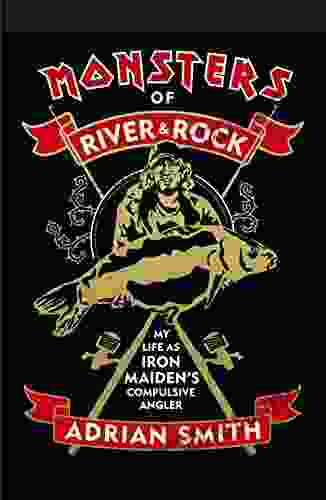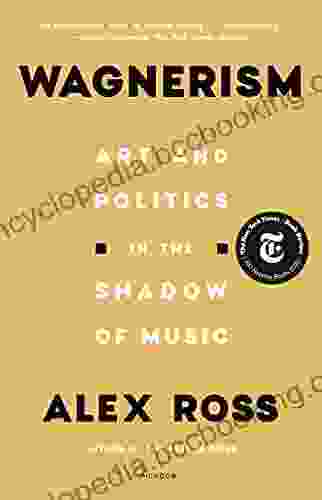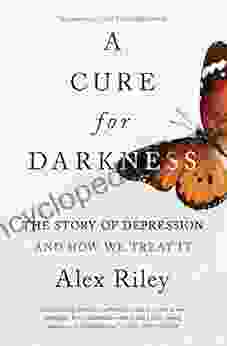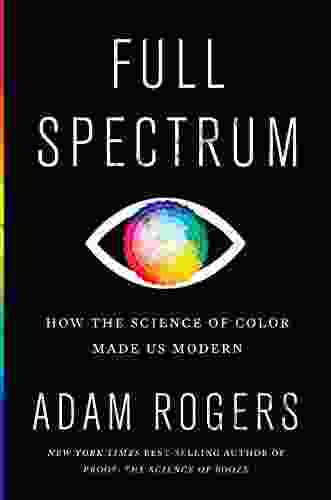How The Science Of Color Made Us Modern

A Chromatic Revolution: The Origins and Evolution of Color Science
From the vibrant hues adorning cave walls to the sophisticated color palettes of digital screens, color has captivated human consciousness for millennia. The science of color, known as colorimetry, has played a pivotal role in unlocking the secrets of this enigmatic phenomenon, revealing its profound impact on our perception, culture, and technological advancements.
The earliest theories on color emerged in ancient Egypt, where artisans meticulously mixed pigments to create lifelike representations in their hieroglyphic paintings. Alchemists of the Middle Ages experimented with different combinations of elements, seeking to decipher the elusive secrets of color creation. It was not until the 17th century, however, that Sir Isaac Newton made the groundbreaking discovery that white light is composed of a spectrum of colors. This revelation laid the foundation for modern color theory and paved the way for the systematic study of color.
4.4 out of 5
| Language | : | English |
| File size | : | 16488 KB |
| Text-to-Speech | : | Enabled |
| Screen Reader | : | Supported |
| Enhanced typesetting | : | Enabled |
| X-Ray | : | Enabled |
| Word Wise | : | Enabled |
| Print length | : | 418 pages |
The Prism of Perception: Color and the Human Experience
Color is not an inherent property of objects but rather a perception created by our brains in response to light. The human eye contains specialized cells called photoreceptors that are sensitive to different wavelengths of light. When light strikes these cells, they trigger electrical signals that are processed by the brain, resulting in the perception of color.
The perception of color is not simply a passive absorption of light but an active interpretation by our brains. Culture, personal experiences, and cognitive biases shape the way we perceive and interpret colors. For instance, the color red may evoke feelings of excitement, danger, or passion, depending on the cultural context. Color preferences are also highly subjective, varying across individuals and societies.
Color as a Cultural Canvas: The Language of Societies
Throughout history, color has served as a powerful tool for communication and cultural expression. In ancient Rome, the color purple was reserved exclusively for the emperor, symbolizing his divine authority. In Japan, the cherry blossom has become a national symbol, embodying the country's ephemeral beauty. Religious iconography often relies on specific color schemes to convey sacred meanings and evoke emotional responses.
Color has also played a significant role in shaping cultural identity. Different societies have developed distinct color palettes that reflect their unique histories, traditions, and values. These color schemes are evident in architecture, fashion, art, and design, creating a visual tapestry that tells the story of each culture.
Technology and Color: Innovation in the Visible Spectrum
The advancement of scientific knowledge about color has led to numerous technological breakthroughs. The development of synthetic dyes in the 19th century revolutionized the textile industry, making it possible to produce vibrant and colorfast fabrics for clothing and furnishings. The invention of photography and film brought color to moving images, capturing the world's beauty in its full chromatic glory.
In the digital age, color has become an integral part of our technological landscape. Computer screens, smartphones, and other electronic devices rely on advanced color displays to deliver rich and realistic visual experiences. The Internet has also expanded our access to a vast array of colors, enabling us to share, communicate, and create in a previously unimaginable chromatic spectrum.
Color in Design: Shaping the Modern World
Color plays a crucial role in design, influencing everything from the aesthetics of a room to the functionality of a website. Designers use color to create visual hierarchy, evoke emotions, and communicate brand identities. Understanding color theory and color psychology is essential for creating effective and engaging designs that cater to the needs of specific audiences.
Color has also had a profound impact on architecture, from the vibrant colors of traditional Japanese temples to the sleek and minimalist interiors of modern skyscrapers. Architects use color to create striking visual effects, regulate temperature, and enhance the user experience of buildings.
: The Ever-Evolving Spectrum of Color
From its humble origins in ancient pigments to its transformative role in modern technology and design, color has played a pivotal role in shaping human experience and technological advancements. The science of color has empowered us to understand, manipulate, and harness the power of the visible spectrum, revolutionizing our perception, culture, and way of life. As we continue to explore the depths of color science, we can anticipate even greater innovations and breakthroughs that will further expand our chromatic horizons.
The book "How the Science of Color Made Us Modern" delves deeper into the fascinating world of color, offering a comprehensive exploration of its history, cultural significance, technological applications, and impact on design. This captivating publication is a testament to the enduring power of color and a testament to the enduring power of human curiosity and ingenuity.
4.4 out of 5
| Language | : | English |
| File size | : | 16488 KB |
| Text-to-Speech | : | Enabled |
| Screen Reader | : | Supported |
| Enhanced typesetting | : | Enabled |
| X-Ray | : | Enabled |
| Word Wise | : | Enabled |
| Print length | : | 418 pages |
Do you want to contribute by writing guest posts on this blog?
Please contact us and send us a resume of previous articles that you have written.
 Book
Book Novel
Novel Page
Page Chapter
Chapter Text
Text Story
Story Genre
Genre Reader
Reader Library
Library Paperback
Paperback E-book
E-book Magazine
Magazine Newspaper
Newspaper Paragraph
Paragraph Sentence
Sentence Bookmark
Bookmark Shelf
Shelf Glossary
Glossary Bibliography
Bibliography Foreword
Foreword Preface
Preface Synopsis
Synopsis Annotation
Annotation Footnote
Footnote Manuscript
Manuscript Scroll
Scroll Codex
Codex Tome
Tome Bestseller
Bestseller Classics
Classics Library card
Library card Narrative
Narrative Biography
Biography Autobiography
Autobiography Memoir
Memoir Reference
Reference Encyclopedia
Encyclopedia Albert Corbeto
Albert Corbeto 3rd Edition Kindle Edition
3rd Edition Kindle Edition Aleksandr Anufriyev
Aleksandr Anufriyev Aaron Barlow
Aaron Barlow Adele Westbrook
Adele Westbrook Adam Shoalts
Adam Shoalts Aileen Erin
Aileen Erin Alessandra Lopez Y Royo
Alessandra Lopez Y Royo Alessia Zorloni
Alessia Zorloni Alex Hatzidakis
Alex Hatzidakis A R Corbin
A R Corbin 2 Edition Kindle Edition
2 Edition Kindle Edition Alan Barker
Alan Barker Abhishek Majumdar
Abhishek Majumdar A M Gregory
A M Gregory Aaron Sanchez
Aaron Sanchez Alan Wolfelt
Alan Wolfelt Akash Yadav
Akash Yadav Alan C Greenberg
Alan C Greenberg Albert R Buchanan
Albert R Buchanan
Light bulbAdvertise smarter! Our strategic ad space ensures maximum exposure. Reserve your spot today!

 Deacon BellTb Complex Analysis Pages 238 Code 1215 Edition 2nd Concepts Theorems: Your...
Deacon BellTb Complex Analysis Pages 238 Code 1215 Edition 2nd Concepts Theorems: Your...
 Brian BellThe Men And Women Who Made Modern Iran 1941 1979 Volume Set: A Comprehensive...
Brian BellThe Men And Women Who Made Modern Iran 1941 1979 Volume Set: A Comprehensive...
 Tyrone PowellUnleash the Mayhem: Dive into the Monstrous Realm of "Monsters of River Rock"
Tyrone PowellUnleash the Mayhem: Dive into the Monstrous Realm of "Monsters of River Rock" Nick TurnerFollow ·3.1k
Nick TurnerFollow ·3.1k Herman MitchellFollow ·8.4k
Herman MitchellFollow ·8.4k Edmund HayesFollow ·10.8k
Edmund HayesFollow ·10.8k Felipe BlairFollow ·7.6k
Felipe BlairFollow ·7.6k Mario BenedettiFollow ·11.6k
Mario BenedettiFollow ·11.6k John KeatsFollow ·19.7k
John KeatsFollow ·19.7k Stephen KingFollow ·13k
Stephen KingFollow ·13k Henry Wadsworth LongfellowFollow ·15.2k
Henry Wadsworth LongfellowFollow ·15.2k

 Francis Turner
Francis TurnerArt and Politics in the Shadow of Music
Music has...

 Jaylen Mitchell
Jaylen MitchellHow Algorithms Are Rewriting The Rules Of Work
The workplace is...

 Chandler Ward
Chandler WardRio de Janeiro & Minas Gerais Footprint Handbooks:...
Embark on an extraordinary adventure through...

 David Mitchell
David MitchellThe Story of Depression: Understanding and Treating a...
Delving into the Shadows of...

 Al Foster
Al FosterStatistics Done Wrong: The Woefully Complete Guide
Tired of being...

 DeShawn Powell
DeShawn PowellJulia Child's Second Act: A Tale of Triumph,...
Julia Child is an...
4.4 out of 5
| Language | : | English |
| File size | : | 16488 KB |
| Text-to-Speech | : | Enabled |
| Screen Reader | : | Supported |
| Enhanced typesetting | : | Enabled |
| X-Ray | : | Enabled |
| Word Wise | : | Enabled |
| Print length | : | 418 pages |






